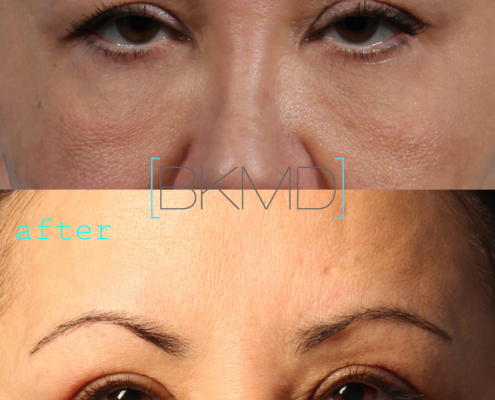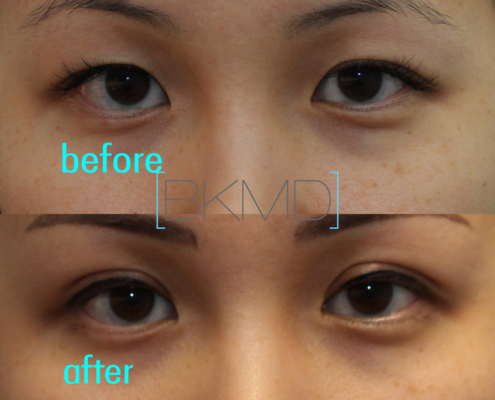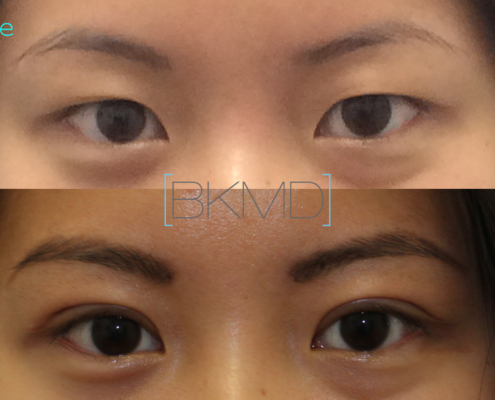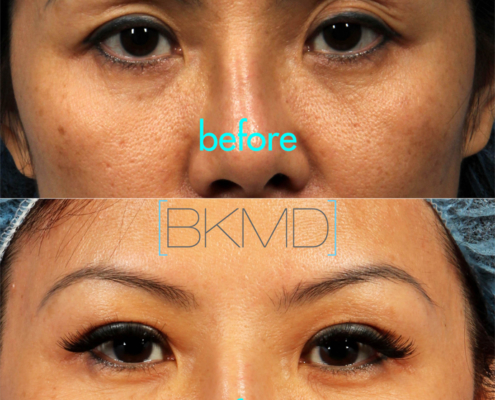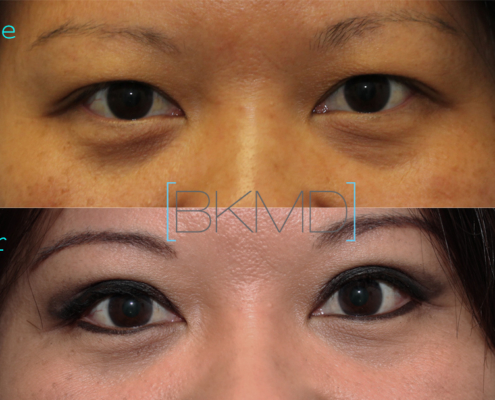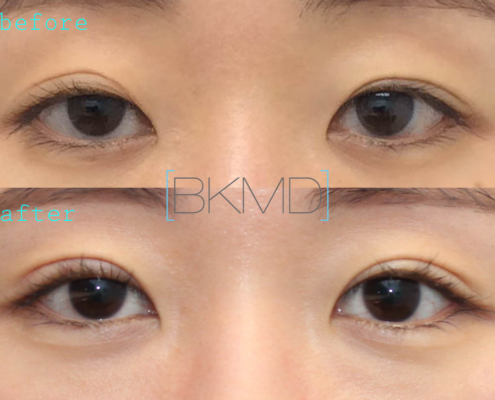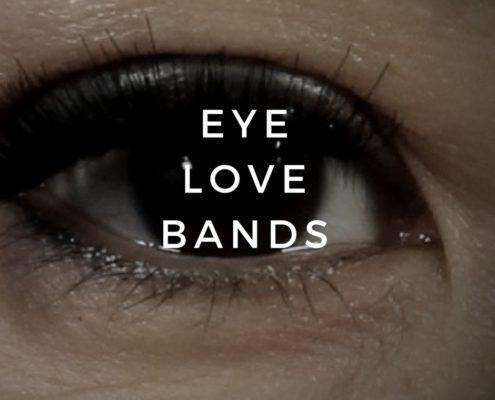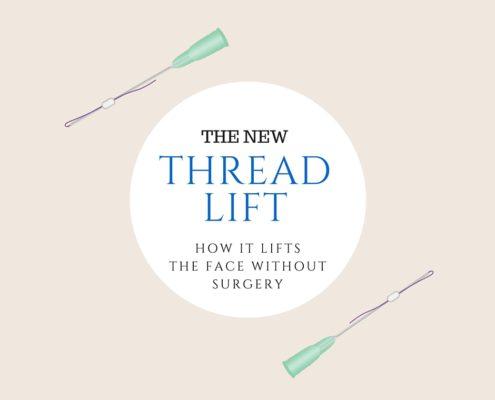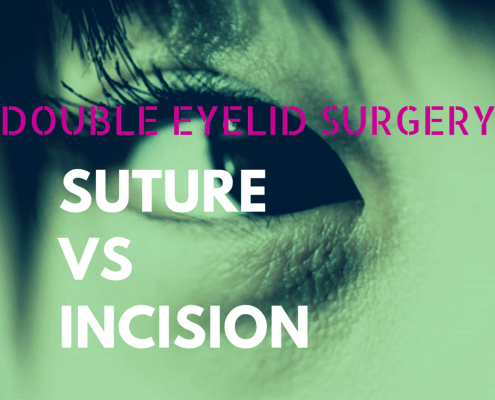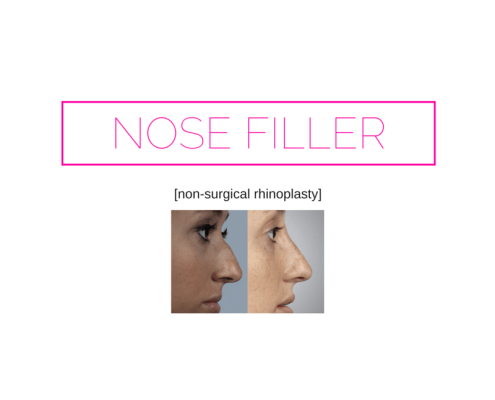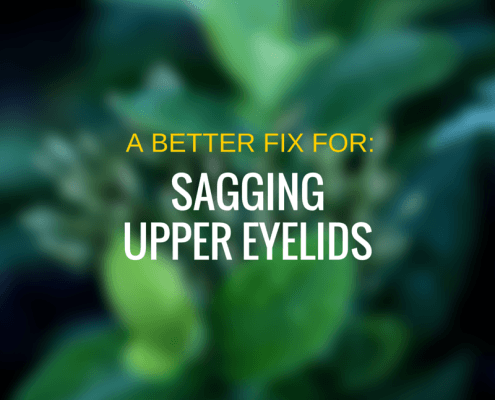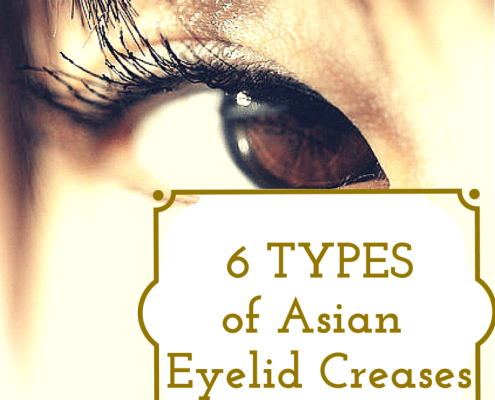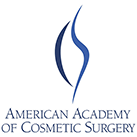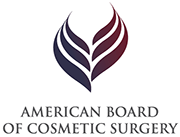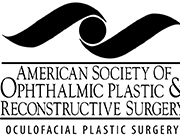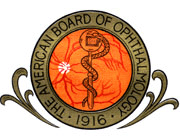Define Your Own Beauty:
Asian Double Eyelid
Surgery
If you’ve ever wished your eyelid creases were more clearly defined or that your eyes had a more open appearance, you may be interested in double eyelid surgery. Dr. Kotlus is an expert in Asian blepharoplasty with offices in NYC.
Your eyes are one of the first things people notice when they look at you—and they should project the confident, beautiful you that you want the rest of the world to know.
But sometimes, the natural features we see in the mirror don’t reflect back exactly what we’d like to see. When that happens, it’s worth considering whether or not there is something we want to change…and what that change might look like.
What is Asian double eyelid lift surgery?
Asian double eyelid surgery is a popular procedure that gives a more open appearance to the eyelids while maintaining the natural attractiveness and ethnicity of the eyes.
To do so, Dr. Kotlus creates, defines, and, in some cases, consolidates the upper lid crease so that the patient’s single eyelid (known as a monolid) becomes a double eyelid.
For some patients, the eyes will appear rounder after double eyelid surgery instead of having an almond shape because of the way the new lid influences the overall eye shape. Rounder eyes may give a brighter and more youthful appearance to some patients.
People looking for Asian double eyelid surgery in NYC come to Dr. Kotlus because of his extensive experience with the procedure and his detailed understanding of Asian eyelid anatomy. This knowledge allows him to carefully control the shape and position of the crease, the upper eyelid fat, and the medial eyelid fold (also known as the epicanthal eyelid fold).
The eyelid crease dictates the shape of the eyelid shelf (or eyelid platform), so it is extremely important to have a surgeon who can position and enhance it with great care.
Some patients want to have a natural-looking eyelid crease created during their surgery, while others choose Asian blepharoplasty because they hope to improve their facial symmetry or to have multiple eyelid creases merged into a single crease. In some cases, Dr. Kotlus may also sculpt the patient’s upper eyelid fat pads or remove excess skin during the procedure in order to enhance the shape of the patient’s eyelid.
Why do patients consider Asian double eyelid surgery?
There are many misconceptions about Asian double eyelid lift surgery—perhaps most notably that it is a Westernization procedure.
However, this is simply not true.
Double eyelid surgery either creates a crease or enhances an existing crease, but it always focuses on doing so while still maintaining the Asian look and shape of the eye. Dr. Kotlus always holds a clear respect for the patient’s natural anatomic features and seeks to enhance rather than to redesign.
Estimates show that about half of all Asian people around the world already have a natural upper eyelid crease, and patients who choose double eyelid surgery are simply interested in obtaining a look that many of their peers already have. Framing the eyes with a surgically created, low, tapering crease will still result in an Asian-looking eyelid rather than a so-called “Western” one.
Asian blepharoplasty has become more popular in recent years as surgical methods have improved and as cosmetic surgery has become more accepted worldwide. The high percentage of Asian celebrities with double eyelids have also influenced people to see this feature as a beauty ideal.
In fact, a study published in the Aesthetic Surgery Journal in March 2014 by Hwang and Speigel entitled “The effect of “single” vs “double” eyelids on the perceived attractiveness of Chinese women” found that both Chinese and non- Chinese observers subjectively found female Chinese eyelids with creases to be more attractive than eyelids without creases.
What other factors can play a role in a patient’s decision to consider Asian double eyelid lift surgery?
In addition to having an eyelid crease created or enhanced, there are a few other reasons patients may consider Asian double eyelid lift surgery.
Notably, some patients wish to have their eyes made more symmetrical. Asymmetry may be caused by a few factors, including:
- eyelid crease asymmetry,
- eyebrow asymmetry (which impacts the eyelid crease and fold),
- or eyelid ptosis (also known as droopy eyes). When eyelid ptosis needs to be corrected, it can typically only be performed by an oculoplastic surgeon.
For some patients, Dr. Kotlus may also recommend fat grafting alongside the Asian blepharoplasty. This is done in order to restore lost volume in the tear trough area and to improve the look of eyes that appear sunken with age.
What is the recovery process like?
There are two stages to recovery from Asian double eyelid lift surgery. The first stage typically lasts just 1-2 weeks, during which the patient will see noticeable swelling and some possible bruising.
During the second stage of recovery, patients will experience a long-term resolution of swelling and scar maturation. This process occurs over a period of months. When the incision is well healed, it will appear as a faint line that blends into the created upper eyelid crease.
What is unique about Dr. Kotlus’s approach to Asian double eyelid lift surgery?
There are two main techniques that surgeons use to perform Asian double eyelid surgery: the incisional method and the suture method.
Dr. Kotlus prefers the incisional method and recommends it to most of his patients because it is more reliable and predictable in forming a lasting crease.
There are a few specific scenarios when he uses the suture method instead (such as when the patient already has an eyelid crease and there is no significant pre-existing asymmetry). But for the most part, Dr. Kotlus uses the incisional method so that his patients may enjoy long-lasting, stable results.
Dr. Kotlus also focuses on a few other key aspects of Asian blepharoplasty with his patients, including:
- Crease Height: Typically, the height of the patient’s eyelid crease should be kept low in order to better reflect natural Asian features.
- Inner Crease Configuration: Dr. Kotlus can modify the skin fold at the inner corner of the eyelid (also known as the epicanthal fold) so that it either tapers or is parallel to the rest of the eyelid.
- Lateral Crease Position: The lateral crease is usually positioned with a slight flare.
- Medial and Lateral Epicanthoplasty: Dr. Kotlus will also discuss options for medial and lateral epicanthoplasty during your consultation. Medial procedures using the Park epicanthoplasty and Z-epicanthoplasty techniques open the inner corners of the eyelids, while lateral epicanthoplasty focuses on the outer corners of the eyelids.
Why should patients choose Dr. Kotlus?
Asian double eyelid lift surgery is a highly specialized procedure that requires a detailed, comprehensive understanding of Asian eyelid anatomy. As such, most eyelid surgeons in smaller cities and suburban areas simply don’t have a lot of experience with double eyelids.
In fact, only a small subset of oculoplastic surgeons are truly proficient in the requisite techniques. Dr. Kotlus is a part of this elite group.
Dr. Kotlus has traveled to treat patients across the world, including surgeries performed in Thailand, Malaysia, and Mongolia. He has also traveled to Korea to give lectures on cosmetic eyelid surgery to Korean surgeons and to share his experience with them.
He has also had a number of patients travel to receive treatment from him in New York, as well as treating many local patients. Dr. Kotlus’s Asian double eyelid lift surgery is popular with his patients of Korean, Chinese, Japanese, Thai, and Filipino descent.
Because of his vast experience and deep understanding of the Asian blepharoplasty procedure, Dr. Kotlus has also treated patients who were unhappy with the results they received elsewhere and has performed revision surgeries for them.
To see what other people had to say about their experiences with Dr. Kotlus, be sure to read patient reviews—or visit the before and after gallery photo page to see results from his Asian double eyelid surgeries.
Are you ready to enhance your natural beauty with Asian double eyelid blepharoplasty?
Dr. Kotlus is fellowship-trained and certified in oculoplastic and cosmetic surgery, which means that he has a deep, comprehensive knowledge of the eyelid from the inside and out.
He also has extensive experience with Asian eyelids and is highly skilled in Asian blepharoplasty and double eyelid surgery including crease defining sutures, epicanthoplasty, and almond shape surgery.
If you’re looking for an Asian double eyelid surgeon whom you can trust to enhance and define your natural features, schedule your consultation with Dr. Kotlus today.
Questions to ask during your double eyelid consultation
If you are researching a double eyelid surgeon in NYC or elsewhere you should come prepared with questions for your prospective surgeon during your consultation. Here are a few helpful ones:
- Is your surgeon an oculoplastic (eyelid surgery) specialist and what is their experience with Asian eyelids and double eyelid surgery?
- Does your surgeon have examples to show you with similar eye types and with results similar to your goals?
- Do you have an inside (tapering) fold or an outside (parallel) fold and will your surgeon keep this the same as your original crease shape?
- Does your surgeon recommend medial epicanthoplasty (inner fold surgery) at the same time and which method?
- Do you have eyelid ptosis (relatively common) and will your surgeon correct this at the same time as your double eyelid surgery?
- Will fat be removed or preserved and if it is removed does your surgeon think this can lead to hollowing later in life (in your case)?
- How often does your surgeon do revision eyelid surgery and is there a cost to you if you require a revision?

